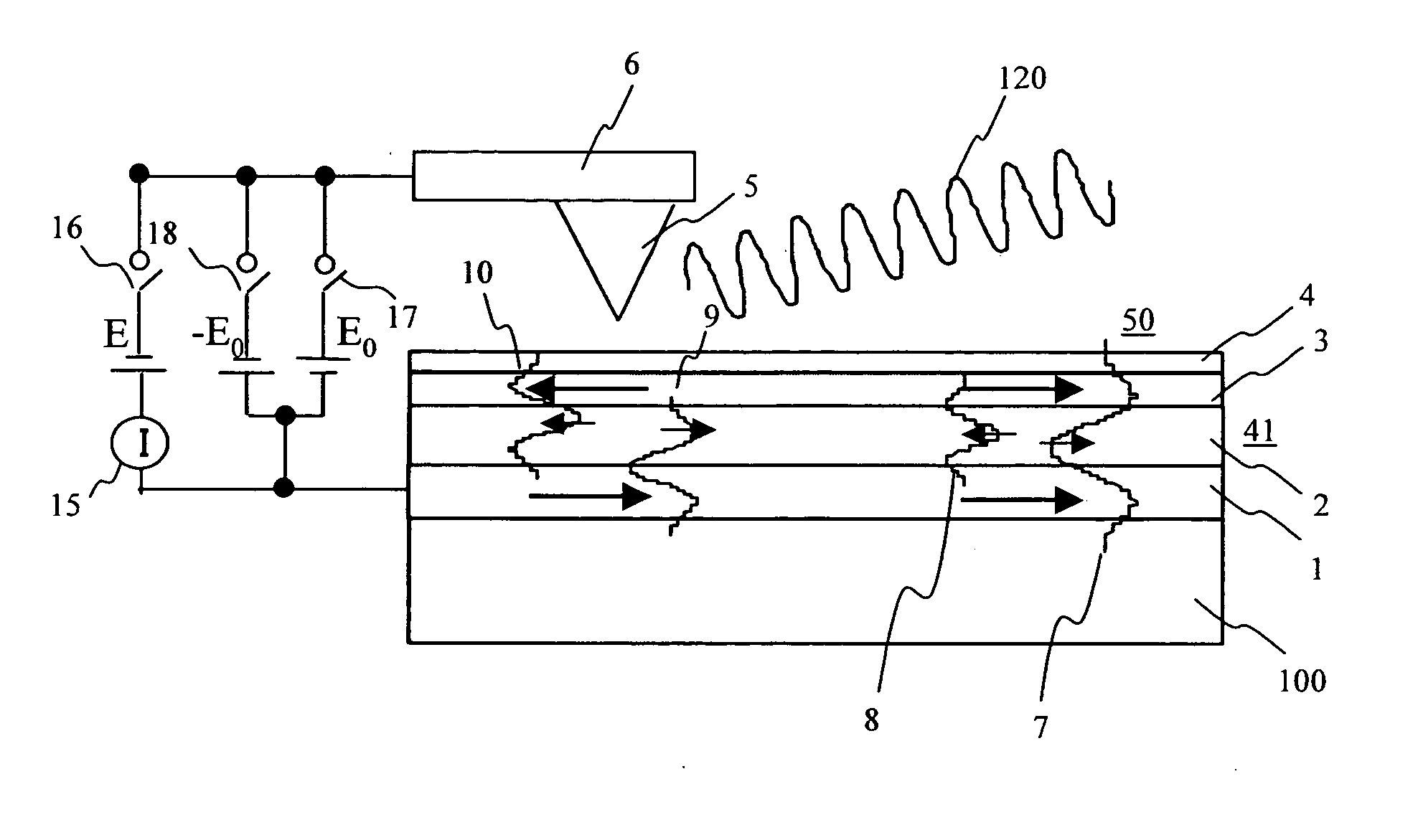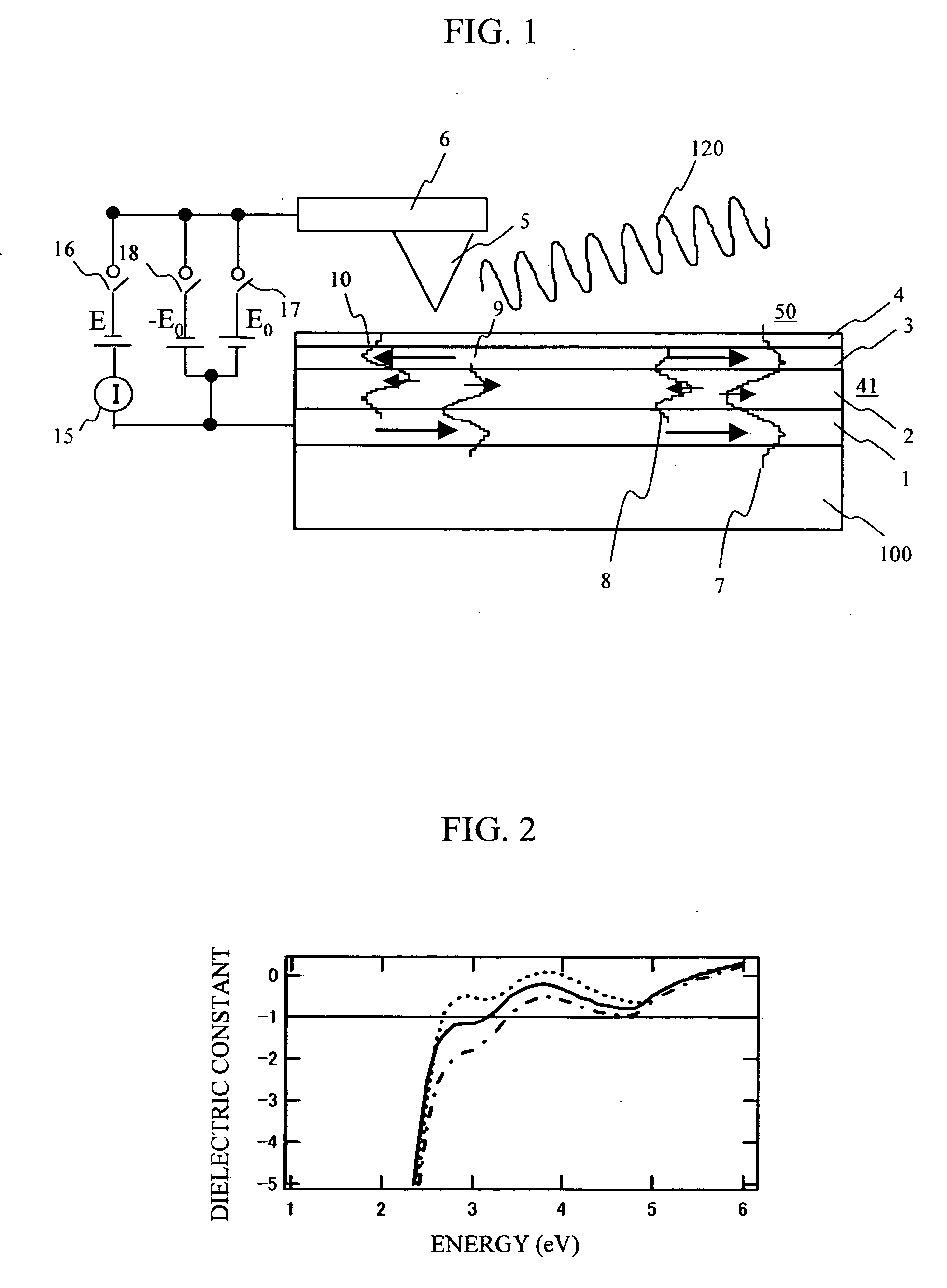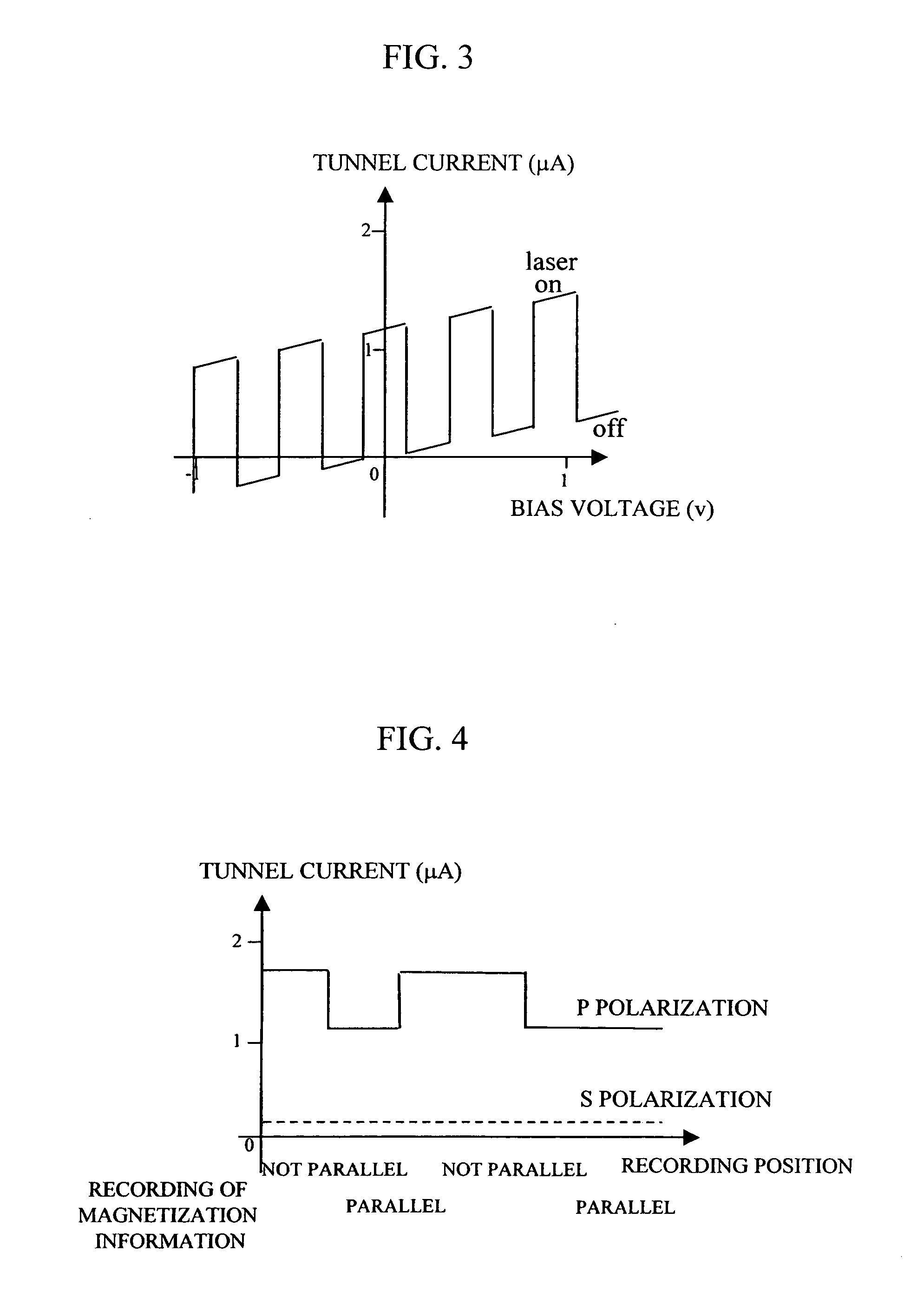Method and apparatus for recording/reproducing magnetization information
a magnetization information and recording method technology, applied in special recording techniques, nanoinformatics, instruments, etc., can solve the problems of metal probe deformation/damage, unavoidable shot noise generation,
- Summary
- Abstract
- Description
- Claims
- Application Information
AI Technical Summary
Benefits of technology
Problems solved by technology
Method used
Image
Examples
first embodiment
[0050]FIG. 1 shows a concept chart for describing a magnetization information recording / reproducing apparatus of the present invention. This apparatus is mainly configured by a magnetic recording medium 50, a metal probe 5 disposed so as to face the medium 50, and an irradiation light beam 120.
[0051] The magnetic recording medium 50 is configured by a multilayer film 41 formed by laminating a ferromagnetic metal layer 1, a nonmagnetic metal layer 2, a ferromagnetic metal layer 3, and a protection film 4 sequentially on a substrate 100. The metal probe 5 is disposed so as to face the surface of the protection film 4 with a 1 nm order gap therebetween. The metal probe 5 is held by a slider mechanism 6 structured just like that of a hard disk drive. At this time, a tunnel current may be used as a feedback signal for controlling the distance (gap) between the protection film 4 and the metal probe 5. The feedback signal may also be generated using an optical lever method used in an ordi...
second embodiment
[0067]FIG. 10 shows a concept chart of the magnetization information recording / reproducing apparatus in another embodiment of the present invention. Unlike the magnetic recording medium 50 shown in FIG. 1, the magnetic recording medium 50 in this second embodiment shown in FIG. 10 includes an anti-ferromagnetic layer 51 formed between the substrate 100 and the ferromagnetic metal layer 1 in addition to the multilayer film 41 consisting of a ferromagnetic metal layer 1, a nonmagnetic metal layer 2, a ferromagnetic metal layer 3, and a protection film 4 laminated sequentially on the substrate 100. This is a difference between those media 50.
[0068] Even in this second embodiment, the state of the quantum well electrons is the same as that in the first embodiment. And, as shown in the right half of FIG. 10, if the magnetizing directions of the ferromagnetic metal layers 1 and 3 are parallel to each other, the electrons having an electronic spin in the opposite magnetizing direction of ...
third embodiment
[0070]FIG. 11 shows a concept chart of the magnetization information recording / reproducing apparatus in still another (third) embodiment of the present invention. In this third embodiment, the protection film 4 and the ferromagnetic metal layer 3 included in the multilayer film are dot-patterned by a lithographic technique. The lithographic technique is employed widely for such manufacturing processes of semiconductor devices as resist patterning, ion milling, resist removing, etc. Each of those layers 4 and 3 has many nano-pillars 53 and 54 disposed at regular pitches. FIG. 12 shows a bird-view of such a recording medium having a plurality of nano-pillars 53 and 54.
[0071]FIG. 13 shows another structure of the recording medium having nano-pillars. FIG. 13A shows an example of nano-pillars formed by dot-patterning the structure of a multilayer film consisting of a protection film 4, a ferromagnetic layer 3, a nonmagnetic metal layer 2, a ferromagnetic layer 1, and an anti-ferromagne...
PUM
| Property | Measurement | Unit |
|---|---|---|
| energy | aaaaa | aaaaa |
| energy | aaaaa | aaaaa |
| bias voltage | aaaaa | aaaaa |
Abstract
Description
Claims
Application Information
 Login to View More
Login to View More - R&D
- Intellectual Property
- Life Sciences
- Materials
- Tech Scout
- Unparalleled Data Quality
- Higher Quality Content
- 60% Fewer Hallucinations
Browse by: Latest US Patents, China's latest patents, Technical Efficacy Thesaurus, Application Domain, Technology Topic, Popular Technical Reports.
© 2025 PatSnap. All rights reserved.Legal|Privacy policy|Modern Slavery Act Transparency Statement|Sitemap|About US| Contact US: help@patsnap.com



